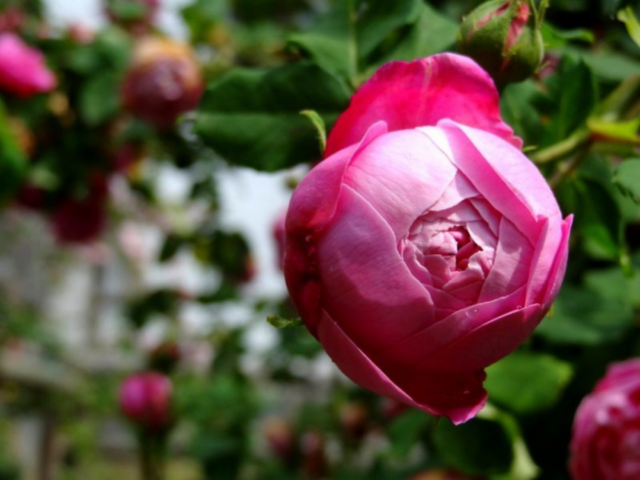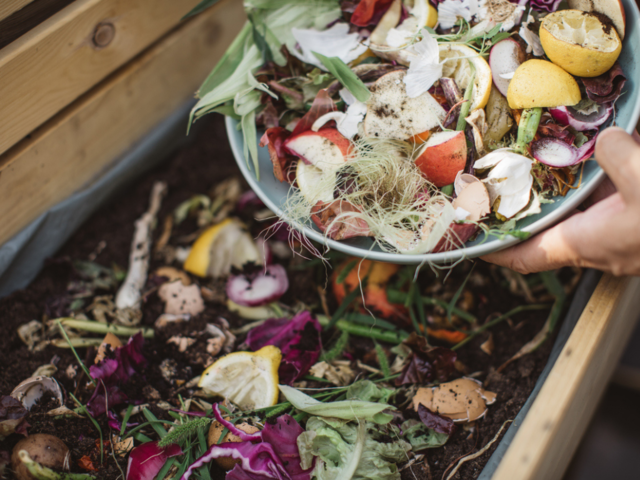Summer is a beautiful time in the garden. Flowers are in full bloom, busy insects are everywhere, and gentle drifts of fragrance are in the breeze. Yet, there is still work to be done.
Constant maintenance is crucial to keep the garden looking good and preparing for the seasonal changes ahead. Always take a notebook with you to jot down plants that need to be transplanted, perennials that need to be divided once summer is over, or desirable plants that could be propagated at the appropriate time. It is all too easy to forget such things as time passes.
Summer plants and flowers
Secateurs or snips are essential tools as you walk around the garden, allowing you to deadhead annuals to encourage a longer flowering period. This is good practice in flower identification since not all flowers require immediate deadheading.
Old roses such as Bourbons and Gallicas or Rosa Rugosa are best left to develop colorful hips. At the same time, deadheading perennials like aquilegia or digitalis prevent seed development rather than encouraging new flowers. Choose a dry day to fertilize selected seed heads carefully or to collect seed from chosen plants.

Bourbon rose. Image: Pinterest.
Some plants may require pruning. For example, walking around the garden can reveal dead branches which can be trimmed out. At the same time, shrubs like Philadelphus, Ribes, and Weigela need to be pruned immediately after flowering to create good growth for the following year.
Climbers like honeysuckle hops and roses need regular care, as new vigorous shoots must be tied into their supports. This will ensure that the climbers continue to look good throughout the summer, and it will pave the way for next year’s growth.
Warm, sunny days are good times for harvesting herbs like oregano, rosemary, and mint ready to be dried for use in the coming months. The oils within the leaves will be at their most intense during the late afternoon.
Kitchen Garden
In the kitchen garden, harvesting must be undertaken daily, with vegetables like peas, beans, and leafy greens such as lettuce and spinach needing to be constantly picked. Check soft fruit, fruit bushes, and fruiting trees to harvest crops as soon as they are ready.
Watch out for pests like slugs and carrot fly infestations, and take appropriate action. Cutaway old fruiting canes on raspberries as soon as they stop producing fruit, as this will create room for new shoots to appear. Tie these into their supports as they develop. Pot up-rooted strawberry runners ready for autumn planting.
Ensure that greenhouses do not become too humid, as this can affect plant health and encourage infestations of whitefly, mealy bugs, and red spider mites. Keep windows open and cover the glass with shading to reduce heat levels. Pinch out tomato plants as necessary.

Making compost from leftovers. Image: iStock.
Remember to turn compost heaps regularly to maximize the amount of heat being generated across the entire heap. If the compost heap looks like it is getting too dry, add a little water and increase the amount of green waste added to the pile.
Watering
During extended periods of dryness, check the kitchen garden and any recently planted shrubs and trees to ensure they are not wilting or suffering from water loss. If you need to water them, use irrigation systems, preferably in the cool of the evening, to ensure no water is wasted.
Only water those plants that really need it. Many plants can survive reasonably well if they have deep roots. Hoeing soil around plants will keep the earth friable, prevent compacting, and allow dew and rain to pass in the earth to reach root systems.

Sprinkler irrigation. Image: iStock.
Lawns grow quickly at the start of summer, but their speed of growth slows down as the season progresses. Therefore, mowing regularly may be needed during cooler periods, but avoid cutting it too low if periods of drought are forecast.
Using a mulching mower is a valuable method of mowing, as it chops up the grass into tiny pieces and returns them to the soil to act as a natural moisture-retentive mulch and fertilizer. Avoid watering lawns wherever possible, as the grass will recover quickly even after several months of dryness.
Read our articles for more gardening tips and advice.
If you are looking to further your skills or start a new career in garden design, take a look at our courses.
